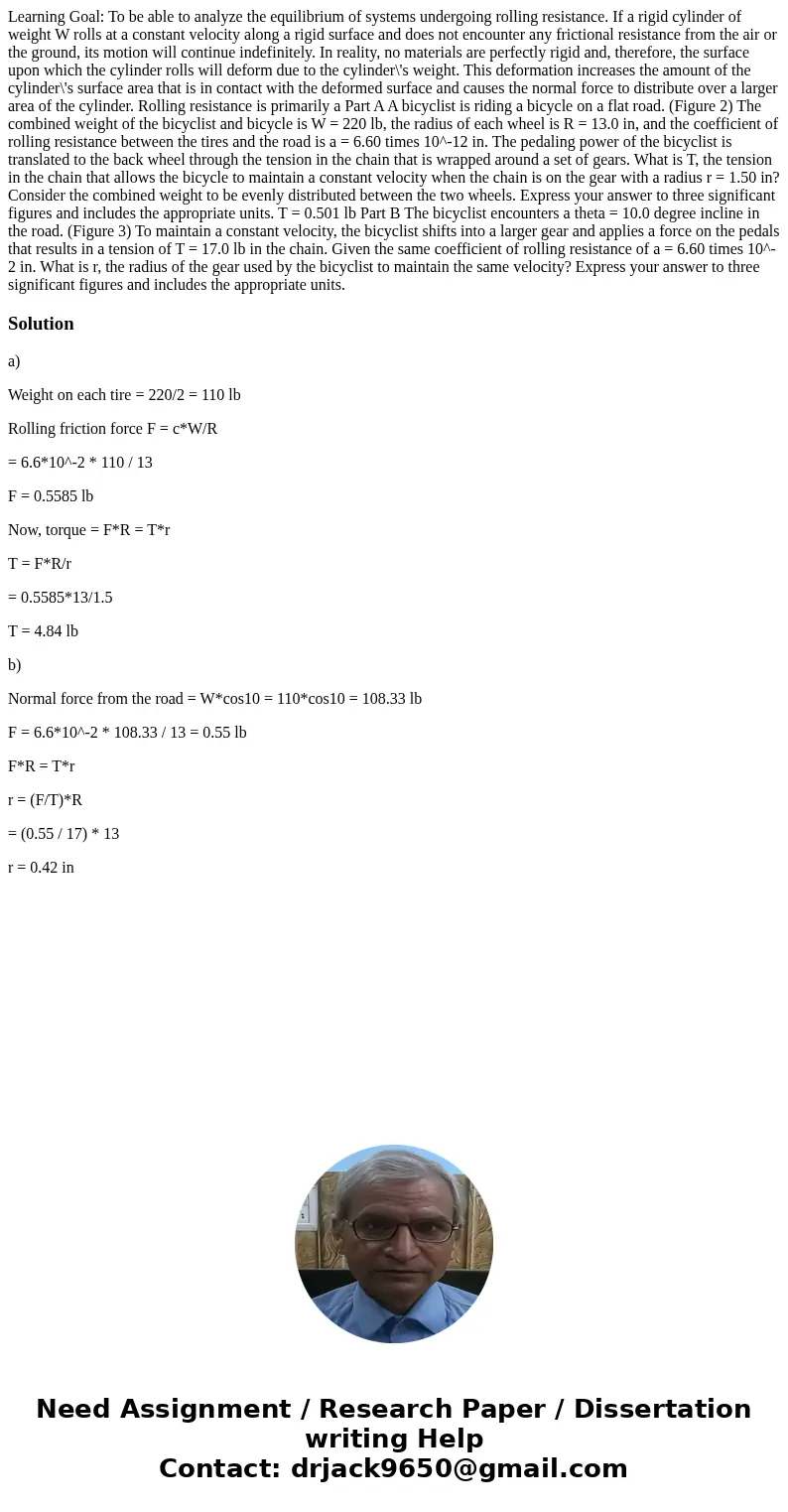Learning Goal To be able to analyze the equilibrium of syste
Learning Goal: To be able to analyze the equilibrium of systems undergoing rolling resistance. If a rigid cylinder of weight W rolls at a constant velocity along a rigid surface and does not encounter any frictional resistance from the air or the ground, its motion will continue indefinitely. In reality, no materials are perfectly rigid and, therefore, the surface upon which the cylinder rolls will deform due to the cylinder\'s weight. This deformation increases the amount of the cylinder\'s surface area that is in contact with the deformed surface and causes the normal force to distribute over a larger area of the cylinder. Rolling resistance is primarily a Part A A bicyclist is riding a bicycle on a flat road. (Figure 2) The combined weight of the bicyclist and bicycle is W = 220 lb, the radius of each wheel is R = 13.0 in, and the coefficient of rolling resistance between the tires and the road is a = 6.60 times 10^-12 in. The pedaling power of the bicyclist is translated to the back wheel through the tension in the chain that is wrapped around a set of gears. What is T, the tension in the chain that allows the bicycle to maintain a constant velocity when the chain is on the gear with a radius r = 1.50 in? Consider the combined weight to be evenly distributed between the two wheels. Express your answer to three significant figures and includes the appropriate units. T = 0.501 lb Part B The bicyclist encounters a theta = 10.0 degree incline in the road. (Figure 3) To maintain a constant velocity, the bicyclist shifts into a larger gear and applies a force on the pedals that results in a tension of T = 17.0 lb in the chain. Given the same coefficient of rolling resistance of a = 6.60 times 10^- 2 in. What is r, the radius of the gear used by the bicyclist to maintain the same velocity? Express your answer to three significant figures and includes the appropriate units. 
Solution
a)
Weight on each tire = 220/2 = 110 lb
Rolling friction force F = c*W/R
= 6.6*10^-2 * 110 / 13
F = 0.5585 lb
Now, torque = F*R = T*r
T = F*R/r
= 0.5585*13/1.5
T = 4.84 lb
b)
Normal force from the road = W*cos10 = 110*cos10 = 108.33 lb
F = 6.6*10^-2 * 108.33 / 13 = 0.55 lb
F*R = T*r
r = (F/T)*R
= (0.55 / 17) * 13
r = 0.42 in

 Homework Sourse
Homework Sourse